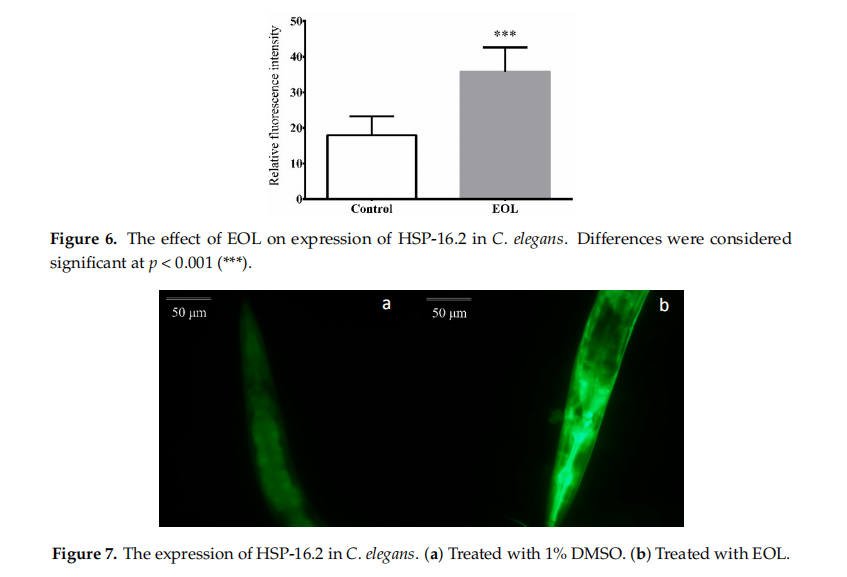Siyuan Luo, Xuelian Jiang, Liping Jia, Chengyue Tan, Min Li, Qiuyu Yang, Yanlin Du and Chunbang Ding*
College of Life Science, Sichuan Agricultural University, Ya’an 625014, China; luosiyuan1998@163.com(S.L.);15397753946@163.com(X.J.);15983630065@163. com(L.J.); tanchengyue7@163.com (C.T.);
limin18398262832@163.com(M.L.);yangqiuyu145@163.com(Q.Y.);18123427338@163.com (Y.D.)
* Correspondence: dcb@sicau.edu.cn; Tel.: +86-835-2885560
Received: 25January 2019; Accepted: 12 February 2019; Published: 15 February 2019
ABSTRACT
The aim of this study was to evaluate the antioxidant activities of extracts from olive leaves (EOL). The main contents of EOL were determined by colorimetric methods. The antioxidant activities were assessed by measuring the scavenging free radicals in vitro. To investigate the antioxidant activity in vivo, we detected the survival of Caenorhabditis elegans, under thermal stress. Subsequently the reactive oxygen species (ROS) level, activities of antioxidant enzymes, the expression of HSP-16.2 and the translocation of daf-16 were measured. The results showed that, polyphenols was the main component. EOL could well scavenge DPPH and superoxide anion radicals in vitro. Compared to the control group, the survival rate of C. elegans treated with EOL was extended by 10.43%, under heat stress. The ROS level was reduced, while the expression of hsp-16.2 was increased to protect the organism against the increasing ROS. The level of malondialdehyde (MDA) also decreased sharply. The activities of inner antioxidant enzymes, such as catalase (CAT), superoxide dismutase (SOD), and glutathione peroxidase (GSH-PX) were potentiated, which might have had a correlation with the DAF-16 transcription factor that was induced-turned into the nuclear. Therefore, EOL showed a strong antioxidant ability in vitro and in vivo. Hence, it could be a potential candidate when it came to medicinal and edible plants

FULL-TEXT:  In vivo and in vitro antioxidant and activities of methanol extracts from olive leaves on Caenorhabditis elegans.pdf
In vivo and in vitro antioxidant and activities of methanol extracts from olive leaves on Caenorhabditis elegans.pdf